




Sara Michelin, Editor-in-Chief
During the 2025 Aspen Film Fest, AHS had the honor of hosting director Sam Fuentes, creator of the film Death by Numbers. Death by Numbers showcases the repercussions of the 2018 Parkland school shooting. Fuentes is a survivor of this tragedy, having suffered a gunshot wound to her leg. This film was nominated for an Oscar and follows her journey through trauma and recovery.
Her visit was more than just an opportunity to learn about filmmaking. It was a strong reminder of the devastating consequences of gun violence and the critical importance of speaking up. During the presentation, Fuentes shared extremely traumatizing details of surviving the attack and the ensuing judicial process. She emphasized the power of taking action. Her story highlighted how vigilance can save lives through preventing violence and offering support to those in need. Fuentes stressed the importance of “See some-
thing, Say Something,” the motto of our own reporting system, Safe2Tell.
Safe2Tell is an anonymous platform for reporting threatening behavior and concerns ranging from bullying to selfharm and potential school violence. This system is available 24/7 via phone, text, the Safe2Tell mobile app, and online. The program was established in Colorado in 2004 as a direct response to the Columbine High School tragedy.
Safe2Tell has proven its effectiveness by successfully addressing thousands of reports annually. In the current 20242025 school year, the Safe2Tell program has received 23,552 reports, a 15% increase compared to last year.
Whether it is reporting a concern through Safe2Tell or checking in on a friend who seems troubled, small actions can save lives. Let us honor Fuentes’ message and Safe2Tell’s mission: If you see something, say something, and take proactive steps towards creating a safer community. Safe2Tell is not just a tool, it is a lifeline. Volume
OPINION

A LETTER TO ANYONE THAT WILL LISTEN: PLEASE, FIX THE ROUNDABOUT
Let’s say you’re a traffic engineer in charge of a roadway that transports thousands of cars a day. You need to manage a confluence of four different...
DoorDash, such a convenient service, but does the business model truly benefit people who are using it for gluttonous behaviors?
DoorDash was originally created as a food delivery service for when people weren’t able to leave the house...
A&E
THE DOORDASH EPIDEMIC A&E DO THESE NAILS MAKE ME LOOK FAT?
Page 10
As summer approaches and school lets out, everyone needs to relax. One fun way to feel recharged and get a confidence boost is to get your nails done. As a high-stress person myself, choosing what to get can be a little... Page 7
Page 11
Editors-in-Chief: Eleanor Carroll, Sydney Klausmann, and Sara Michelin
Managing Editor: Owen Cruz-Abrams
Section Editors: Marley Rich and Chase Slesinger-Hall
Writing Editors: Yale Gieszl, Josie Jacobs, and Hallie Zilberman Advisor: Sarah Ward


Josie Jacobs, Writing Editor
Within the walls of AHS, students stress over our 15-minute IOs, meanwhile on the Senate floor, Senator Cory Booker spoke for over 25 hours.
On April 1, 2025, Booker made history by delivering the longest recorded speech on the Senate Floor. While scholars debate whether his speech qualifies as a filibuster, it drew national attention to his cause against the Trump administration.
Booker’s speech began at 7:00 p.m. EDT on March 31, 2025, during the Senate debate over the nomination of Matthew Whitaker as U.S. Ambassador to the North Atlantic Treaty Organization (NATO). Booker, a vocal critic of the Trump administration, spoke at length against the nomination while periodically answering extended questions from fellow senators. His remarks concluded at 8:06 p.m. on April 1, clocking in at 25 hours and 4 minutes – the longest speech in history.
The Senate has a long tradition of extended speeches used to delay or block legislative action, known as a filibuster. The official Senate website defines a filibuster as “a loosely defined term for action designed to prolong debate and delay or prevent a vote on a bill, resolution, amendment, or other debatable question.”
However, Booker’s speech did not technically meet the criteria for a formal filibuster. Earlier that day, the Senate voted 49–42 to enact cloture on Whitaker’s nomination. Cloture is a rule established by the Senate in 1917 to limit debate on an issue, and it is invoked by a
specific majority vote, capping the time allowed for further discussion. In Booker’s case, the cloture motion set a 30-hour limit for debate before the final confirmation vote.
Even so, Booker used the remaining time to make a statement, speaking under the same rules applied during a filibuster: he could not leave the floor, even for breaks, and he could only pause to answer lengthy questions posed by other senators.
Before Booker’s marathon speech, the record for longest Senate floor remarks belonged to Senator Strom Thurmond, of South Carolina, who spoke for 24 hours and 18 minutes in 1957 to block the Civil Rights Act. Unlike Thurmond, whose filibuster aimed to stop a bill from passing, Booker’s extended speech occurred after cloture had been invoked, meaning it couldn’t delay the final vote indefinitely.
Nonetheless, Booker’s effort reignited public interest in Senate traditions and sparked debate over whether prolonged speeches in today’s political climate are meaningful acts of protest or symbolic gestures. Some can’t help but find it ironic for Cory Booker to snatch a historic Senate record from a man who would’ve never wanted him even to set foot on the Senate floor.
While Booker’s speech couldn’t block the confirmation vote for Whitaker, it drew widespread attention to both the nomination and broader concerns about the Trump administration. It also highlighted the evolving role of lengthy Senate speeches in modern American politics, especially when live broadcasts and social media amplify such acts far beyond Capitol Hill.
Following the speech, political commentators and constitutional scholars debated whether Booker’s appearance counted as a filibuster under Senate tradition. While most agreed it did not meet the official definitions of a filibuster, it undoubtedly stands as a historic moment in Senate history.
Booker’s 25-hour speech is a reminder of how individual senators can use their floor time to make statements and capture public attention, even when legislative procedures limit their ability to delay or prevent a vote. While not a filibuster in the traditional sense, Booker’s stand will go down as the longest continuous speaking appearance in Senate history.


Wherever life takes you next, your local community bank is here to help you succeed.
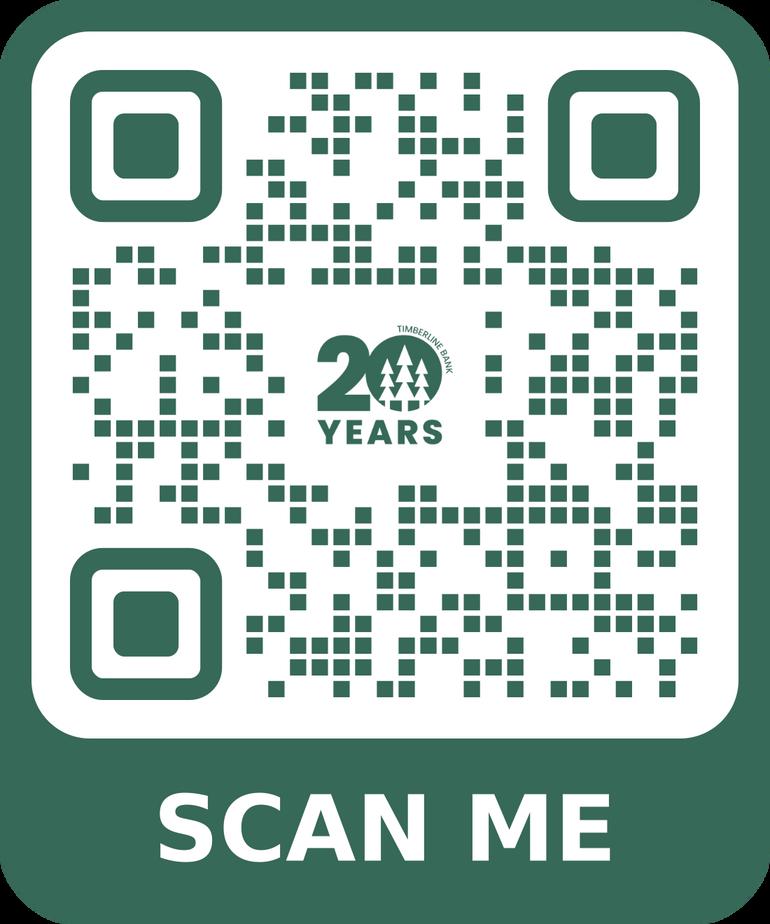


Yale Gieszl, Writing Editor
Every year, as the school year comes to a close, many seniors are forced to move on from the sports that they love. However, AHS senior Araya Thompson hopes to continue running track and field, her main sport, for as long as possible.
An Aspen native, Thompson has been attending ASD schools all her life. She has played basketball and run track all 4 years of high school. Now, with only 10 days left until she graduates, she reflects on everything that Aspen High School and its athletics have given her.
“I’ve definitely grown a lot,” Thompson said, “my coaches have really helped me with becoming a better athlete and a better person overall.”
Despite the challenges of balancing academics and athletics, oftentimes, many athletes feel motivated to do well in school as a result of their sport. Thompson agrees with this, saying that her sport has helped her stay on top of her school work. Apart from academics,Thompson has very fond memories from her sports, the first of which being an age old tradition, senior night.
“All of my favorite memories are probably in sports,” Thompson said, “for basketball, my senior night was really fun, just with all of my team there, and then for track, it was definitely my freshman year during the state championship meet when we all went and did a bunch of fun things.”
During her Junior and Senior years, Thompson has grown into a leader within her sports, assuming the role of captain in track her senior year.
“I hope that they remember me as a person that they can go to whenever anything’s happening, and as just a reliable, nice person,” Thompson said.
Later this year, Thompson will be attending Colorado State University and studying criminology. She hopes to continue her athletic career by trying to walk on to the Colorado State track and field team. Overall, Thompson says she is very excited for what is to come.
“I’m just really excited to make new memories and new friends within sports, and then for school, I’m just excited to learn about everything criminology.”
Yale Gieszl, Writing Editor
If you ask college football fans their favorite team’s first practice, you could get a multitude of responses. Many people’s answers would consist of months from May to August. However, most teams actually hold their first practice in early March in preparation for their spring scrimmage. This tradition goes all the way back to the origins of football in 1899, when Harvard held an open spring showcase at Jarvis Field. However, this did not consist of the now normal intrasquad scrimmage, but rather took the structure of a practice, including drills and other more specialized activities. Over the years, spring practices and games have become more widespread. When the NCAA came into fruition as a governing body, spring practices began to see more restrictions regarding padded practices, hitting, and the number of allowable practices. This was a big change, as pre-NCAA spring football sometimes was even more smash-mouth than its fall counterpart.

es are beginning to fall out of favor. In fact, according to ESPN, 19 Power 4 teams have canceled their spring games so far. This is primarily because of injury risk and increased tampering in the age of the NCAA transfer portal.
In the past decade, spring football scrimmages have drawn some serious attention from fans. In fact, Ohio State University’s 2016 spring game was the most attended in college football history, with just above 100,000 specta-
tors. These high turnouts are vital for a college’s athletic department, allowing it to draw in essentially an extra game’s worth of revenue each year. Spring games, however, are not the main focus for most teams, but rather the practices. According to the NCAA, spring practices must be conducted over the course of a 34-day period. Each week, teams can hold 20 hours of unrestricted activities, and players must have at least one off day per week. In total, 15 on-field practices can be held, and no more than 12 can involve contact, and only 8 can involve full tackling.
Most importantly, spring practices do not take away from pre-season practices in the fall. This means that spring football is essentially an unpunished and unrestricted opportunity for programs to get an early start to the season. During these practices, teams can start to teach younger players the playbook, iron out question marks at positions that may have arisen throughout the offseason, and even get an early start to understanding what works and what doesn’t work for this year’s team of players. Despite the overwhelming benefits of spring practices, spring games/showcas-
In a press conference on February 1, 2025 that concerned the cancellation of Nebraska’s spring game, head football coach Matt Rhule said, “The word ‘tampering’ doesn’t exist anymore. It’s just an absolutely free, open, common market. I don’t necessarily want to open up to the outside world and have people watch our guys and say, ‘He looks like a pretty good player. Let’s go get him.” Rhule also talked about last year’s televised spring game, which he said resulted in various coaches contacting his players and attempting to offer them roster spots on other teams.
Although spring games may be losing popularity in some areas, many programs still hold televised spring scrimmages. Ohio State, Purdue, Alabama, Florida, Georgia Tech, and a multitude of other power conference schools played their spring games on April 12, and various other schools such as Texas A&M, Oregon, and the University of Colorado held their spring games later in April.

Hallie Zilberman, Writing Editor
Much of the world’s most notable drug trafficking takes place in the Golden Triangle, where the borders of Laos, Thailand, and Myanmar meet. Separated by the winding Mekong River, the area is notorious for its significant cultivation of opium and is commonly considered to be the focal point of the global opium trade.
In 2024, the UN Office on Drugs and Crime (UNODC) estimated that 30 to 60% of the world’s opium is produced in this area.
In northeastern Laos, within the Golden Triangle, lies a Hong Kong-run casino named King’s Roman.
The US Department of the Treasury states that the King’s Roman Casino “facilitates the storage and distribution of heroin, methamphetamine, and other narcotics for illicit networks.”
Around the world, illegally grown and traded drugs cause economies to collapse, safety to falter, and crime rates to grow. Attacking this issue should start within the Golden Triangle.
In 2007, a 3,000-hectare 99-year lease went into effect through the King’s Roman Group, a corporation run by Zhao Wei and based in Hong Kong. The lease granted the King’s Roman Group the land, and in turn, the company promised to develop the area positively, both economically and environmentally.
The influence of Wei’s ownership of the land permeates his Chinese culture and overall feel of the area - with clocks set to Beijing time, the Chinese yuan advertised as the desired currency, and Chinese as the local lingua franca, as opposed to Lao.
The King’s Roman Group has repeatedly bragged about an imminent “integrated trade and tourism zone,” promising a lavish and opulent society filled with luxury resorts and amenities. Instead, it is filled with illegal trade, immeasurable prostitution, and extreme gambling. The zone’s main attraction is its beloved King’s Roman Casino, built in place of the promised developments.
The King’s Roman organization was placed on the US Treasury sanctions list in 2018 for human trafficking, money laundering, bribery, drug trafficking, and wildlife trafficking. However, Zhao Wei has denied these allegations, claiming there’s no concrete way to back them up.
As a result of Thailand and China tightening their borders with Myanmar, more methamphetamine than ever before is smuggled across the Laotian border.
Jeremy Douglas is the Regional Representative of the UNODC for Southeast Asia and the Pacific. He provides insight into the area’s involvement in drug trafficking.
“The drugs that are manufactured here make it as far as the Pacific, New Zealand, Australia, and Japan, so we see very powerful narcotics on the streets of Sydney or Tokyo that lead to addiction and all the destructive impact they have on individuals, families, and the broader society,” Douglas reported to a 2024 UNODC report on casinos and money laundering, among other things, in the region.
As extreme narcotics are detrimental to users’ health, the King’s Roman area must be properly managed.
Additionally, the UNODC believes that the majority of the Golden Triangle zone began and developed from the profits of laundered drugs, meaning that the exploited earnings are likely already deep within the Laotian and surrounding economies.
Local organizations must take notice of the extreme drug trafficking in the area. With this in mind, Laotian authorities have executed multiple raids on illegal organizations within King’s Roman, including those related to drug trafficking.
Additionally, in 2016, a plan from the Lao Cabinet released its 2016 - 2020 plans for narcotics control.
The plan included “strengthening enforcement of the Law on Narcotics; enhancing the capacity of officials to handle narcotics cases; increasing
support from external partners; and expanding anti-drug education efforts, particularly at the local level.”
The UNODC has implemented around 120 regional border liaison offices, which allow law enforcement agencies to take control of the situation through regulations and supervision.
The Laotian government, as well as international organizations, have taken remarkable steps towards combating King’s Roman drug trafficking. However, the region’s corruption, the fabric of drug trading, and economic hardships have made these efforts more complex. It is necessary to implement holistic efforts to improve drug trafficking in the region. If regulations regarding drug use and commerce become stricter, rehabilitation treatment should also be available in the area to decriminalize the topic. By promoting rehabilitation rather than incarceration, recovery would be encouraged, and the general stigma surrounding addiction would become relaxed.
Furthermore, there should be more opportunities for legal sources of income rather than drug production. The government could offer programs to train people in agriculture or small business creation. The community and area would benefit from sustainable, holistic solutions that assist the general population sustainably and reasonably.
Sara Michelin, Editor-in-Chief
They told me to try everything, so I did.
I pursued art. I became a lifeguard. I took up photography and started covering sports games. I’ve thought of trying psychology. I wrote for the school newspaper and became Editor-in-Chief. I’ve even considered nursing.
I’m constantly applauded for being so well-rounded -- that being well-rounded will look good in college applications and help me figure out what I really love.
Yet here I am, with a variety of paths to choose from, but no clear direction.
As college quickly creeps up, I know I’m supposed to pick a major. Yet realizing that choosing a major is choosing a career track – and inherently a future – is incredibly overwhelming. How am I supposed to choose when every option feels only somewhat right? I like art, but I’m not sure I love it enough to risk the starving artist cliche. Journalism is fulfilling, but burnout is real, and the industry might be dying. I love photography, but I’m haunted by the fear that it isn’t a sustainable job. Medicine intrigues me, but I’m unsure whether I want to go to med school for so many years.
We’re told to try everything so we can discover our “one true path,” but no one talks about what happens when you end up loving everything too much. I’m stretched so thin across hobbies and interests that instead of getting clarity, I’ve ended up overwhelmed.
I envy those lucky enough to know what they have wanted from the start –the future scientists, aspiring engineers, and talented athletes – the kids who have known what they wanted to do since the ‘mature’ age of six.
The system convinced me that if I try everything, I’ll find the thing, but what no one told me is that sometimes trying everything just makes the whole process of actually choosing a future worse. Sometimes, trying everything

doesn’t lead to clarity. Instead, it leaves you stuck. I’m stuck in the middle of too many doors, afraid that opening one means locking the others behind me.
I know people say, “You don’t have to have it all figured out right now,” and maybe they’re right. Maybe I’ll change
my major three times, or find my ‘thing’ five years from now in some random class I didn’t expect to enjoy.
But today? All I want to do is be a 17-year-old girl, and It feels like I’m being asked to commit to a future I haven’t even had time to imagine.

Eleanor Carroll, Editor-in-Chief
To me, junior year has been one big realization that I will not be in high school forever and that next year I’ll be living out in the real world. This is something I’ve known is going to happen, but I’ve always just thought, “I don’t need to worry yet,” or just assumed that I would need to deal with it later. Now that it’s almost the end of the school year, reality has struck: procrastination isn’t able to slide as easily anymore, as deadlines are quickly approaching, and I have to start making these big decisions about college now.
I’ve been researching schools and majors for a while now, so I have a strong idea about where I want to go and what I want to study. However, the thought of leaving and applying still scares me; what if I don’t get into any of my top choices? What if I do but can’t commit due to affordability or something else? I’ve been trying to be realistic and keep my options open, which leads to a lot of uncertainty. I’m confident about knowing what I want to do in the future, but since everything is up in the air now, it leads me to question how I will narrow my list of schools down when it comes time to apply.
It has been extremely overwhelming watching the current seniors be accepted into schools. A lot of it has been happiness and excitement for their future, which gets me amped up for next year, but hearing their experiences regarding the process of applying and waiting to hear back is horrifying. Now it’s time to step into their shoes, as the Common Application for the class of 2026 opens on August 1, which, believe it or not, is in less than four months.
This means it’s grind time– all juniors should be scheduling regular college counselor meetings, locking in for classes to raise grades, asking for letters of recommendation, and so much more. It can be a lot to manage all at once, and it is easy to lose motivation when there is so much to do. The best piece of advice I’ve been given from upperclassmen throughout the years surrounding all of this is to stay on top of it. It’s okay to be stressed, but ultimately, so much of it is out of your control. You just have to go with the flow, even when the future is unpredictable.
Not being able to plan my next four years in advance is hard for me, as I need structure in my life and overthink almost everything. However, it is important to try not to overanalyze every possibility about the future and remember to take a deep breath when the thought of college becomes stressful. This process is hard for everyone, so for the next four months, it’s ok to stop, take a break, and be flexible. The most important thing to remember is that you will end up wherever is right for you, as everyone’s path is unique.

Owen Cruz-Abrams, Managing Editor
Let’s say you’re a traffic engineer in charge of a roadway that transports thousands of cars a day. You need to manage a confluence of four different roads, all of which have differing traffic volumes based on the time of day. A traffic light has already failed, and you want to make everyone wait so no one feels left out. Ooh, I have an idea! A roundabout!
No, it probably didn’t go that way. When Aspen put in the roundabout at the Castle Creek-Maroon Creek-SH82 intersection, maybe they truly believed it would be the best solution. Maybe that was true when it was built in 2001, but even in 2016, the roundabout caused hour-long delays. Today, companies are forced to charge an extra fee for jobs in Aspen because their employees must wait at the roundabout, local Greg Goldfarb writes. There is no clear solution, at least not a published one, but the writers of
multiple proposals agree: something needs to change.
The problem is simple. At the start of the work and school day, a significant portion of Aspen’s more than 2,000 daily entering cars are all on the road at the same time. These vehicles are confined to a single lane with a choke point at the roundabout, and the traffic backup is often miles long because it takes time for each car to go into the circle.
Roundabouts in other countries are built completely flat, so drivers can see across to the other side and are barely slowed down. Aspen wanted to make the roundabout beautiful, though, so the landscaping in the middle blocks the view of other cars and contributes to the traffic.
This same traffic happens at 5:00PM too – but there, the issue becomes the single lane leaving Aspen. A solution proposed for this
entrance is called the ‘Straight Shot’ - allowing all of this Aspen-bound traffic to have its own lane - but this does not remove the problem of the roundabout, it just circumvents it. The Straight Shot will still cause a traffic choke point when the new roadway re-enters the main flow of Aspen traffic. Even the traffic light proposed at the end of the road will not eliminate this issue because Main Street and the new road still have to join eventually.
As an Aspen High School student, I am Auniquely positioned to notice the impact that the roundabout has on after-school traffic. Every single car leaving Aspen Highlands, the Maroon Bells, and the Aspen School District has to funnel through the roundabout. This is not only a headache but a safety risk because so many cars joining a roundabout increase the potential of accidents.
My parents always told me that if I brought up a problem, I had to
give an answer too. I am not a traffic engineer, and the City of Aspen does not have billions of dollars to spend on traffic, so I cannot provide a reasonable one. That said, many of the cars and trucks that enter Aspen or go to Aspen High School do not have heavy equipment. This means their drivers could park somewhere and take public transportation the rest of the way.
Aspen could instill a permitting system to drive past Buttermilk and create robust transportation methods – I would recommend a sky gondola or a train, either of which is expensive but fast – to move the rest of the population. This would also provide more funding for the city. The parking system at Buttermilk would have to be rebuilt, likely with a massive underground garage, but if Aspen could pull it all off? The roundabout, no longer congested with thousands of vehicles, could actually work again.
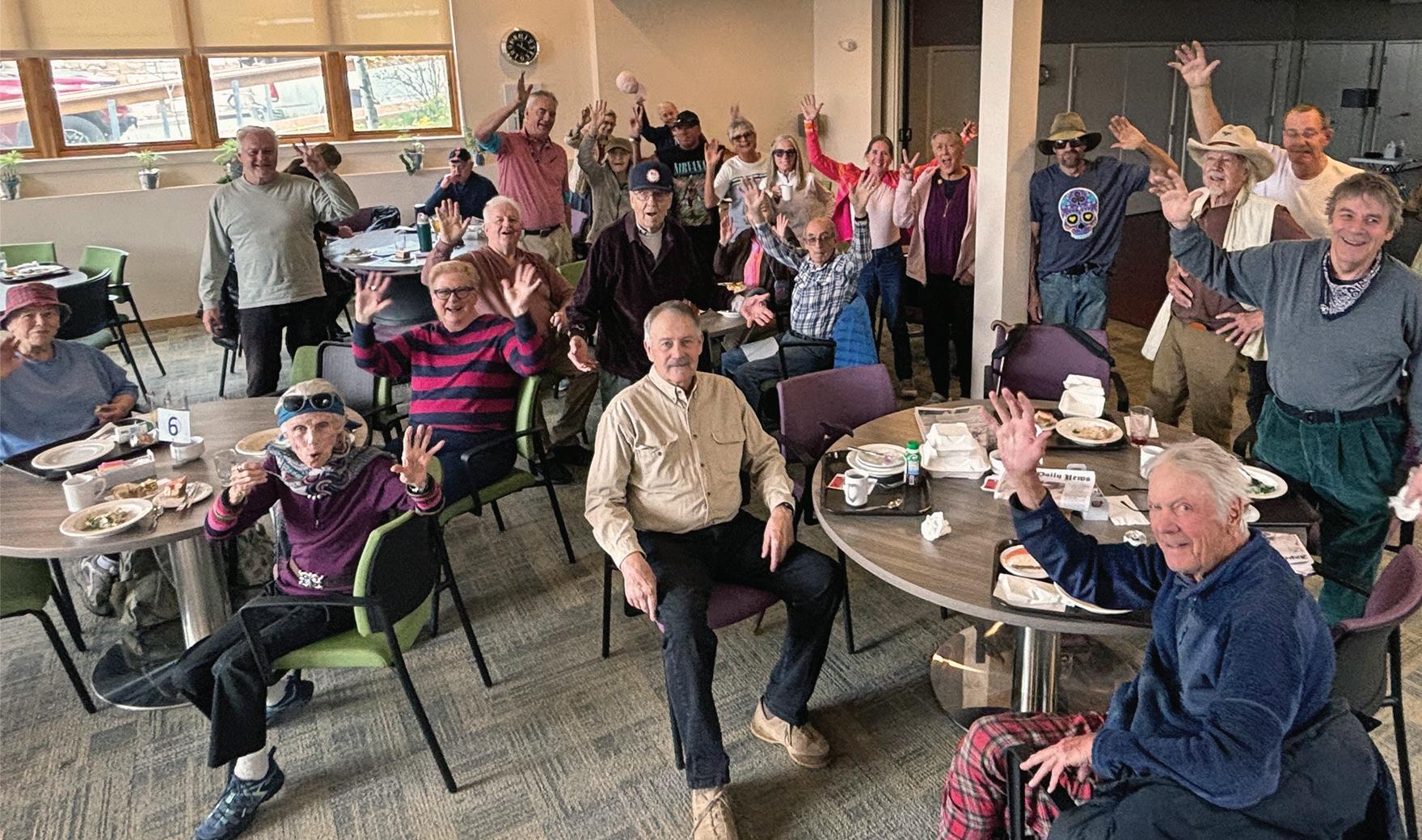
Sara Kershow, Editor-in-Chief
That time of year has come once again, where the black barriers live outside of the Skier Dome, signaling the season of IB exams.
Everyone who attends Aspen High School for 11th and 12th grade will take an IB exam at some point, hence the ubiquitous saying ‘IB for all.’. Because of the IB English requirements at AHS, at some point, you will find yourself sitting in the Skier Dome, fluorescent lights shining down on you, and a clear water bottle by your side, writing many essays. But what do you need to know for these exams? Well, firstly, I would recommend not getting a stomach bug two days before your exam, but not everyone can be so lucky. IB exams are not scary or intimidating (like your senior assassin), so, here’s what you need to know about IB exam season.
Firstly, each class will bee very different, some teachers will finish a month early, giving you premium time to review, and you’ll be good.! Other classes won’t be so easy. You might finish content on Monday when the exam is on Friday, or your teacher might still be giving you presentations, even when you won’t be in class. At this point, there is
nothing you can do about it, but at least you won’t have to go to class after the exam. Next, one might think, I’ll cram the night before the exam, it’ll be fine, I’m telling you that will not work. The night
before the exam, go to bed. I promise you, sleeping will help you more than reading over your notes till 3 AM. Most importantly, don’t stress, excess cortisol in our brain actually makes us forget more. While you’re studying, it’s essen-

tial to take a walk outside, get a coffee, matcha, or another fun drink of some kind, just destress; it’s just as important as studying.
This next thing is something many might not think about when heading into their IB exams. You need to get a good pen., IB exams require you to write in a blue or black pen on every test. On IB exams, you can’t use a gel pen, which is my preferred pen of choice; this leaves you with one option: a ballpoint pen. Many might come in with the classic Alpine Bank pen, or the one Eileen gives you at the beginning of the exam, but writing for two hours with a flimsy plastic pen will leave your hand crampy. Also, if you struggle with handwriting, a bad pen will exaggerate this. I am still on the search for the perfect IB exam pen, I guess the joy lies in the journey.
Last but not least, try your best. IB exams are probably some of the last tests you will ever take in high school, which is more sweet than bittersweet, still take it in., Also, you’re locked in there for a while, and there is not much else to do, why not try and save thousands of dollars off your college education by getting credit for doing good on your exams while you’re at it.
Luna Murray, Staff Writer
To know me is to know that I am constantly filled with nostalgia. Past experiences, memories, and friendships are always lurking in the back of my mind, and rose-tinted glasses seem to fit my face perfectly.
As I approach the end of my high school career, it is impossible not to feel nostalgic and reflect on my experience at AHS. Over the past month, my reflections, though varied, consistently return to the lessons I’ve learned and the insights I wish I had as a freshman. That being said, here is a culmination of all the lessons, tips, and advice I have learned over the past four years.
Friendships
Going into high school, the number one thing I heard about was how much your friend group will fluctuate and change. I scoffed and rolled my eyes at the mere thought of my best friends of the last eight years being broken up, but I underestimated the power of a new environment and the separation that it causes. While that experience brought immense pain and isolation, it taught me how to branch out and make new friends. Now that I’ve had that experience, my first tip is to surround yourself with people who make you feel good about yourself and encourage you to be unapologetically yourself.
Grades
One of the biggest lessons to learn in high school is the importance of working hard. Putting effort into your assignments, presentations, and homework will always pay off. It shows your teachers

that you care and instills a strong work ethic, which you utilize for the rest of your life. Organization paired with motivation is a recipe for success, and although it pains me to say it, grades do, in fact, matter. They determine what doors will open to you in the future and allow you to explore more options, so work hard and learn as much as you can. You’ll gain something from your classes if you try hard and put in the work, even if the grade isn’t ideal. That being said, your grades don’t always reflect you. Recognize that they are often important to succeed, but they don’t define you as a person.
Involvement
The ‘classic high school experience’. We grew up seeing it on screens and dreaming of having it when the time came, but this expectation and fantasy were abruptly halted by reality. My high school experience has been anything but
‘classic’, and as soon as I realized that it was going to be nothing like what I was hoping, I gave up on seeking that movie experience. Instead, I should have been putting myself out there even more. Therefore, my advice is to go to more parties, give 100% at school events, and have the most outrageous school spirit, even if it feels cringey. You can’t coast through school expecting all these fun experiences to happen to you, only YOU can make these experiences happen!
If it isn’t clear already, teachers are the backbone of schools. Although they can be stubborn, annoying, and harsh at times, they are vital resources. Learn to communicate with them respectfully and effectively, and they will be more than happy to help you. Being kind to teachers is important, as they will be the people you will ask to write letters of recommendation in the future. Start
building relationships with them as soon as you can so you can get to know their teaching and grading style, but also so they can get to know you and your learning style.
High school is a time to find yourself. You are surrounded by new people in a new environment, so exploring, discovering, and finding new parts of yourself is a gift. It is a time to discover what you really enjoy and want to pursue. Join clubs that interest you, sign up for new classes that sound fun, take part in a sport that you’ve never done before, and always be kind to everyone to make new friends. While doing so, dive into new fashion, listen to new music, and watch as many movies as you can. Take care of yourself
Although you are always surrounded by people in high school, it can often become an isolating experience. It’s imperative to take care of yourself before anything else. Prioritizing your mental well-being above grades, friendships, and sports is essential to making sure you can continue being yourself. Additionally, getting good sleep, eating well, and being mindful of your body are imperative to success.
I know firsthand the challenges and hardships that high school brings, but no matter how lonely you feel, understand that high school is just one chapter in your life. Though it feels life-altering right now, four years will fly by much faster than you think, so try to slow down and appreciate what you are feeling right now, good or bad.
Marley Rich, Section Editor
Every person wonders at one point or another if their life is “normal”. When I was in middle school, I fell in love with the nearly 5-minute, 2016 Buzzfeed video “Is your life average?” The video depicts major milestones in a person’s life through dance. While the actors are dancing, statistics such as when a person might say their first word, have their first kiss, lose their first parent, and the age gap between siblings are displayed on the screen. There is no speaking or dialogue, and one continuous stream of music.
Now that it is almost a decade later, I am wondering if many of the statistics are the same for kids and teenagers today.
0-7: Early Development
The first age group we can look at is 0-7 years old. A few milestones that stayed the same were learning how to walk between about 9-20 months, learning how to talk between a year and a year and a half, having an imaginary friend between 3-7 years, and losing your first tooth at 6 years old.
One slightly different thing was siblings. The average number of kids per family in the United States is still about 2, however, now the average age gap has grown from 2.5 years to about 4. Another statistic that was different is the age at which children are learning to write. The video claims that children will learn to read and write between the ages
of 4-5 years old.
Today, children are starting to hold a pencil and copy letters at 4, but they are not making sentences and reading words beyond memorization until about 6-7 years old. Learning later is now thought to be the better course of action since
Between the ages of 8-13, the main statistics were at what age girls and boys start puberty, and that has not changed. 13-18: Teen
The final age group we are going to look at is 13-18 years old. The statistics in this section mainly involve develop-

the child’s brain is more developed, and there is no evidence that children who learned to read later were behind their earlier reading peers by age 10.
8-13: Tween Development
ing relationships and experimenting with substances. The video says the average age Americans get drunk for the first time is 13-14 years old.
A Harvard Health Publications study
now says that the average age for boys is 11 and for girls 13. The age range for getting high has become significantly smaller, with the video saying anywhere between 12-18. Now the average age to get high for the first time is between 1214 years old.
Throughout the years, the average age for a first kiss, 15 years old, and the range when teens fall in love for the first time, 15-19, has stayed the same; however, the average age when teens have their first relationship and lose their virginity has gone up. In the video, the average teen is supposed to have their first relationship and lose their virginity at 17, nowadays, most teens are starting at 18.
The website World Population Review has mind-bending maps and statistics on what the average age is for milestones across the world. This data can change the way you see yourself, people your age, and your country as a whole.
Despite the introduction of AI, a higher reliance on smart devices, and a global pandemic, kids and teens today are not living much different lives in terms of milestones. The ages above are the average age for milestones, but they are not when everyone will experience these parts of life. No one of a different age is doing anything wrong.
Everyone is on their own path, but after looking at these statistics, is your life normal?
DoorDash, such a convenient service, but does the business model truly benefit people who are using it for gluttonous behaviors?
DoorDash was originally created as a food delivery service for when people weren’t able to leave the house. Following GrubHub’s footsteps; DoorDash was founded in 2013, gaining mass popularity around 2018, DoorDash became a public company in December 2020 (due to the pandemic’s huge impact on the company). Not just home in the United States, DoorDash is a dominant force in places like Canada, Japan, and even Australia. Today, DoorDash is doing amazing in the food industry.
DoorDash has since been used for straight gluttony--and believe me-I’m guilty of this as well. Recently, I attended the Colorado Future Business Leaders of America State Leadership Conference in Aurora,where I DoorDashed food multiple times. My main reason was, our group typically got dinner from Chick-fil-A, which I can’t eat due to their usage of peanut oil in their products (I’m jealous). When I did DoorDash food, there would already be about 20 people waiting outside for their order to be delivered. I was appalled.
Which is surprising because I literally make mukbangs on TikTok (@chewing. with.chase). Nevertheless, the food that these kids would get from their dashers was insane. I asked one person what he had, because his bags were stuffed, and he was bringing back two 100-finger-tailgate orders from Raising Canes (which, according to their website, each one feeds 27-29 people). When I asked how many people he was sharing with, he answered three. THREE?! Are we being serious? I genuinely thought I was being rage baited, but when I saw them later on, they gave me some left overs (thanks!)
There is also a setting on the app where you can have your dasher deliver straight to your doorstep, and only God knows how many people chose that instead of taking the elevator down to get their food.
Nevertheless, the DoorDash epidemic needs to stop.
Countless dollars wasted, countless pounds gained, and the instantaneous post-DoorDash clarity. That’s really all you get from DoorDash. Thankfully, DoorDash isn’t available in Aspen, otherwise myself, and many others, would be absolutely cooked.


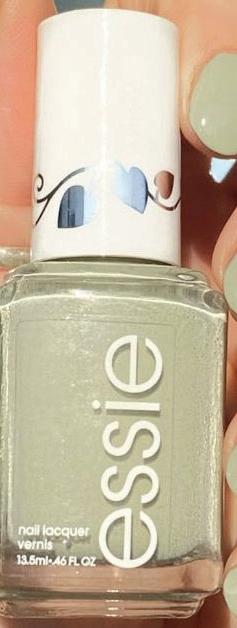
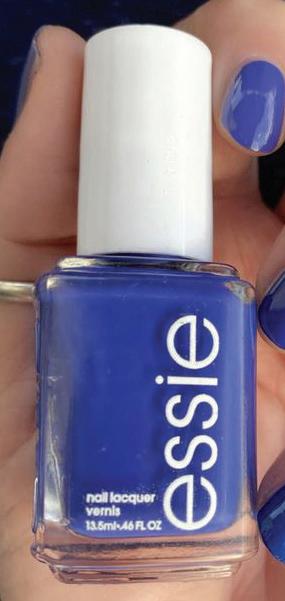
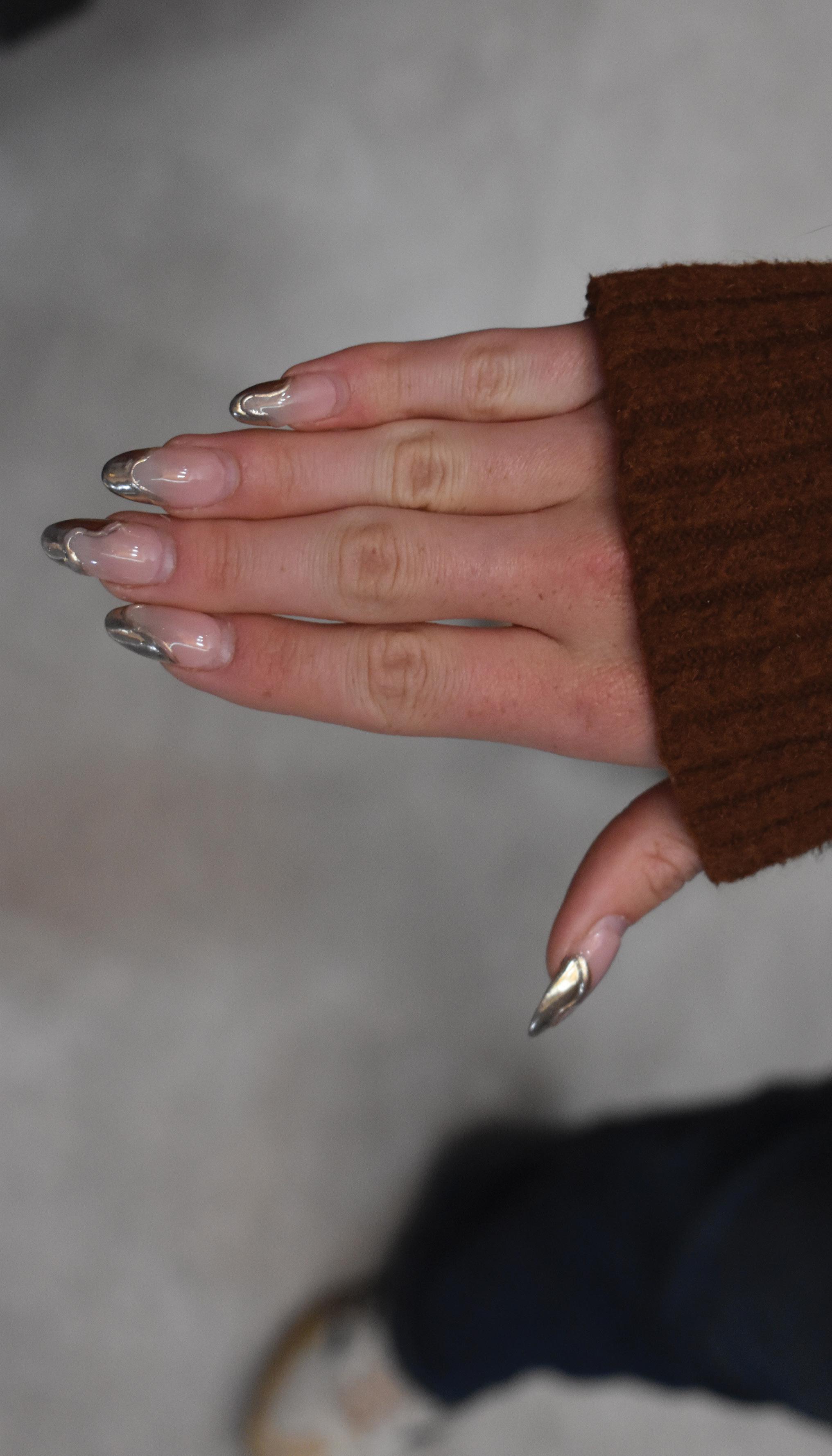


Imagine this: you introduce your friend to an artist or song you love. He’s awestruck (obviously); you bond over how amazing your music taste is, and he adds it to his playlist. Later, he puts the same song over a mid-at-best fit-check, and everyone is obsessed with his “indie/ underground/diverse” taste. #notcool Now look, I’m not a gatekeeper. I’ll happily direct anyone to Frank Ocean’s best songs (which you can only find on SoundCloud). I am a firm believer that every person deserves the gift of
good music; that’s how artists become successful in the first place. However, when I hear Fiona Apple blasting at the function from a Timothee Chalamet-lookalike’s phone, and he claims he found it himself, I get suspicious. Sue me.
The theme of guys becoming cool for simply enjoying stereotypically “feminine” things, in general, is a trend I, for one, am sick and tired of. While painting your nails, wearing pink, and listening to Clario is great and all, it doesn’t necessarily warrant foaming at the mouth for some Depop-wearing fashion TikToker. I think straight women of this generation have gotten too wrapped up in seeing one kind of guy - the gym-going, truck-loving, probably really-into-cars guy (we all know him), and there’s absolutely nothing wrong with that. It’s human nature to reject “stereotypical” traits we deem “ordinary”; we’re all guilty of trying to stand out. However, stealing the interesting aspects of your peers because they look “cooler” on you is not human nature.
If you didn’t want to read all of that or need a synopsis, my basic point is to stop worshipping men for enjoying the same

things you do. If your jaw wouldn’t drop if you saw Faye Webster on your best friend’s playlist, do not, I repeat, do not, treat the basic guy from your English class any differently. It’s extremely reminiscent of women routinely being overlooked time and time again in the music industry- think Doechii, a great artist who has been making music since 2019. Her music has always been great, however, she didn’t get the real recognition she deserved until she was featured this past year on Chromakopia, Tyler the Creator’s album.
And before the critics say “blah blah blah, Tyler the Creator is a popular artist, it’s not just because he’s a man, yadda yadda yadda.”
I offer you this,
women in the music industry, all phenomenal songs (pun intended). However, her following was nowhere near as big as it was until Chromakopia dropped in 2024… See my point now?
“
” Interests are unique to who you are, it’s not just a costume to put on to make you someone you’re not.
- Persuasive by SZA and Doechii: 2022
- Phenomenal by Janelle Monae Ft. Doechii: 2023
- Swamp B*tches by Doechii and Rico Nasty: 2022
All collaborations with successful
These are just some examples, but this happens all the time. Not just in the music industry or in petty predicaments like some dude stealing your music taste and playing it off as his own, but in everything from fashion to language. It’s time that we collectively stop encouraging this weird performative behavior. It’s cool to like Lorde and Charli xcx and whoever else, if you actually like them. Stop latching onto other people’s interests or what TikTok tells you to like just because you think it’ll make your “persona” cooler or get people to like you. Interests are unique to who you are, it’s not just a costume to put on to make you someone you’re not.



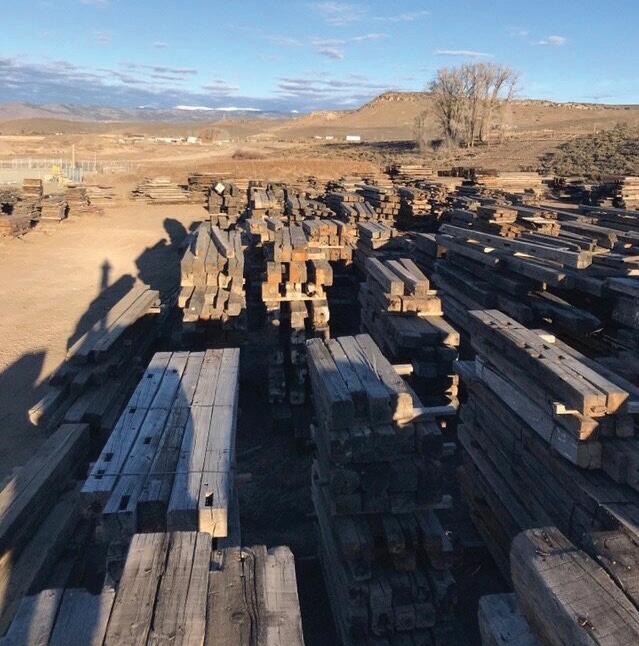






Hallie Zilberman, Writing Editor
This past summer, I traveled to Cambodia with my family. Within our first hour there, my mother turned to me, marveling over the pure beauty of every single Cambodian. Their sharp bone structures, defined cheekbones, tanned skin, and full lips were noticeable and immediately impressive.
The next day, we visited Angkor Wat with our tour guide, a Cambodian man named Wy. I will never forget when Wy turned to my father and casually mentioned how he thought his “strong cheeks” (referring to his high cheekbones) were undesirable. This comment was odd to me; my mom and I agreed that this was an appealing feature.
Later that day, as I lathered myself in sunscreen to block the radiant sun, Wy turned to me and said, “How lucky you are to have such pale, porcelain skin! You have the skin of a model. I have
always dreamed of having such light skin.”
While the ‘model’ comment flattered me, I was taken aback by his repeated mentions of my ‘pale, porcelain’ skin. He stated this as a compliment, yet I found myself offended. In my mind, I’d always hoped to have tanned skin.
I later decided that my pale skin is unique in Cambodia and, therefore, viewed as an attractive trait. Understanding this caused me to discover that the perception of beauty is developed within cultures. After realizing this, I felt empowered to research beauty further.
I found that some of the earliest known representations of the female body are found in the Venus Figurines, statues that can be traced back to 35,000 years ago in Paleolithic Europe. These statues portrayed the ‘ideal’ female body-type at the time, and are assumed to have symbolized fertility and attractiveness. Despite
this, a Wiley study asked participants to rate the attractiveness of the statues, and most received low attractiveness scores.
These statues of women are round and pear-shaped with large thighs, breasts, and stomachs. These features were admired due to the success in fertility and health that they demonstrated. The Venus Figurines were created during an ice age in Europe, when food was scarce and pregnancy was infrequent. The larger statues displayed well-fed, childbearing bodies, and were rare and often unattainable.
Aphrodite, the Greek goddess of beauty and love, is depicted as having stomach rolls, small breasts, and a plump figure. Traits such as a fuller stomach were associated with fertility, motherhood, and wealth, similar to the Venus Figurines.
In Ancient China, young girls were forced to tightly bind their feet to keep them small, preferably 3 inches long, to create what they called the ‘lotus foot.’ The tradition was seen as extremely beautiful, proving the girls’ ability to obey and making them appear elegant and delicate.
During the 15th century in Renaissance Europe, women with rounded, softer bodies and pale skin were considered attractive. Pale skin exhibited wealth, as they didn’t spend time working in the sun and becoming tanned. Chubby bodies meant they were wellfed, which exemplified high status. Even today, beauty standards vary between cultures. The Suri women in Ethiopia, for example, pierce and stretch their bottom lips until a clay plate can fit inside the piercing. Some believe that this custom began to discourage slavers from kidnapping Suri women. The
stretched lip is a sign of beauty and is necessary if a woman hopes to marry.
In Northern Thailand, a tribe called Kayan Lahwi is notorious for their women’s elongated necks, which are made by wearing thick coils around their necks. This causes their heads to appear to be floating on a golden pedestal. Such an ancient tradition, there is no direct answer as to why the Kayan women do this, but it is often claimed that the rings protected them from tiger attacks.
In the western areas of the world, many women pluck and wax their eyebrows, hoping for two clean and defined brows. In Tajikistan, however, women dream of having a thick, dark unibrow. Although many native Tajikistanis got lucky with the unibrow gene, those who lack it use herbal remedies such as usma to promote eyebrow growth.
These timely and worldly examples each vary from the modern-day Western beauty standards. Beauty and attraction are entirely perspective-based. Some of today’s most celebrated models may have been deemed unattractive in past times or other cultures; beauty to one may be ugly to another.
A society’s values can significantly influence its perception of beauty. Understanding that beauty is ever-changing can remind you that the standards you know today are merely the expectations tied to where you are, and when you’re there. These criteria may be completely different in a century or by simply traveling to other parts of the world.
Criticizing yourself for not fitting perfectly into society’s standards is not worth it. Everybody is beautiful in one culture or another, at one time or another. If you feel beautiful, you are beautiful, and don’t let society tell you otherwise.

Chase Slesinger-Hall, Section Editor
“Comparison is the thief of joy” may seem like such a simple statement at first, but it hits hard when you realize how accurate it is.
I’ve always been compared by others to my siblings and their vast achievements. My sister is an academic scholar
who has maintained a perfect GPA since her freshman year of high school, and is now a junior at university studying biology. My brother, on the other hand, is athletically inclined and recently signed to be a D2 football player at Colorado Mesa University. He participates in any sport he can fit in with his time, and he consistently impresses everyone.
On many occasions, I’ve been asked, “Why aren’t you like your brother?” and, “Damn, what happened to you?” Because of this, I’ve always been under the impression that I’m the sibling with nothing going for me.
It’s almost impossible to ignore the spotlight that shines on my siblings as well as those around me. I can’t help but undergo the feelings of frustration and self-doubt.
As the youngest sibling, I also feel left out of many things they do together. I was never able to socialize with them as they were able to with each other. As people say, there’s always a duo in a trio. Growing up, all I ever heard was
my parents talking about my siblings’ accomplishments. I don’t know what my strengths are; I’m searching for my spark.
I don’t live a bad life, but there’s nothing that I excel in. I don’t have a big friend group, but I have many different friends from different groups. I have decent grades, and I’m mildly involved in the school. But I want to find where I am proficient, and what my passions could turn into.
I’ve tried a variety of activities to discover my passions, but I can’t seem to find anything that works.
I was awarded my first varsity tennis letter this year, but I’m really not that good. There are 13 of us on the team, and 11 of those are varsity spots. Along with this, there was almost never a perfect lineup. We frequently had people missing from the team who were sick or just couldn’t make it work within their schedule. With this, I played the lowest possible position you can play on varsity (doubles four). Tennis is fun, I’m just not that good at it.
Out of all of my friends, I have the lowest GPA. I’ve always been the butt of the academic jokes. People will complain about getting an A- on a test, while I got a C. When we compare our scores, they’ll say something along the lines of, “Yeah, but that’s normal for you,” or even worse, the insincere, “Good job!” It’s a rare occurrence for me to score higher on a test than one of my friends, but when I do, they accuse me of cheating. Am I that dumb?
I’ve realized that the journey to find my spark is just as important as the destination. Just because I haven’t found where I belong doesn’t mean I should stop trying. I’m learning to embrace the process and failure in my journey, and that sets me apart. When I compared my own journey to others, I ended up missing out on the joy of my own. Comparison is the thief of joy. Everything I try is a new step in finding where I belong. Perhaps my path is just different from my siblings’; I have more of a winding road, while they have a one-way street.
Sydney Klausmann,
Editor-in-Chief
Spring is in the air. The birds are singing, the sun is shining, and the flowers are blooming. As we enter this spring, a season of prosperity and growth, we often admire the beautiful blooms that surround us both in our lawns and local supermarkets. However, there is more to these flowers than what meets the eye (or the nose!). Dating back thousands of years, flowers have developed their own unique language, known as floriography. Together, we will explore the secret meanings of some of the most popular spring flowers: tulips, daffodils, irises, and lilies of the valley.
Starting with tulips, these might be easily one of the most recognizable flowers. They can be seen in masses in the fields of the Netherlands, but also might be found dotting your parents’ flower bed or in bouquets at your local grocery store. While you may have seen tulips more times than you can count, it’s unlikely that you understand their meaning. In general, tulip flowers are symbols of unconditional love, spiritual rebirth or newcomers, and charity.
Next up are daffodils. As opposed to tulips, different colored daffodils don’t carry specific meanings. However, as a whole, daffodils represent new beginnings, rebirth, and hope. This meaning
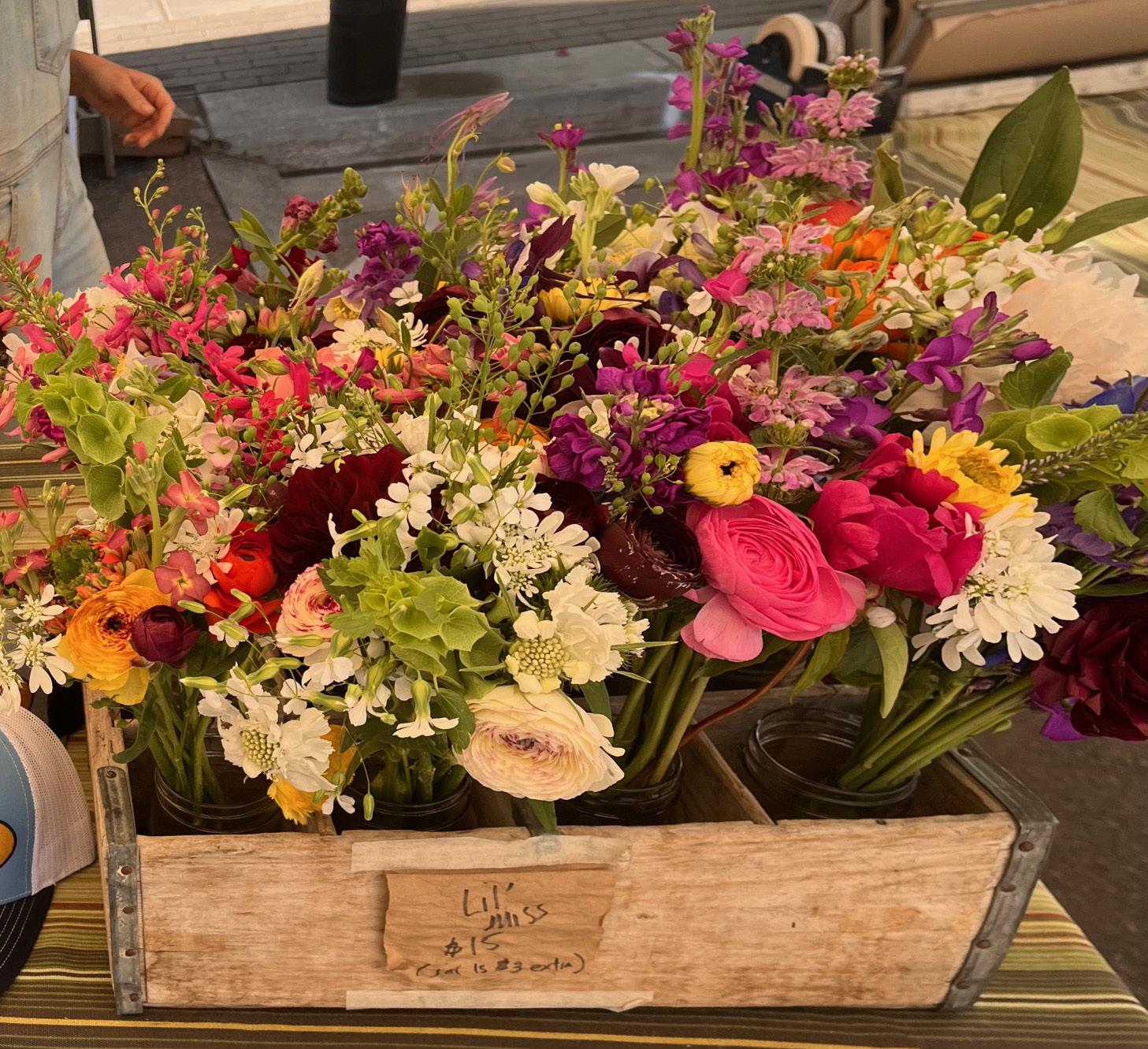
can be attributed to the fact that daffodils are often among the first flowers to bloom after winter. Their cheerful yellow blossoms often signify the arrival of spring and the warm weather that is to come. If you know someone
who needs a little push to keep moving, daffodils are definitely the best choice to give them that extra dose of hope.
Iris comes from the Greek word “rainbow,” which is a nod to the variety of hues and shades that this flower
produces. In floriography, this flower conveys faith, hope, and wisdom. A large portion of this flower’s meaning comes from Greek mythology, specifically the goddess Iris. In Greek mythology, Iris would travel between the human world and the divine world on a rainbow to deliver messages and news, so the iris flower adopted the meaning of hope and trust in the divine to guide the way. Additionally, as the messenger to the Gods, Iris held immense wisdom and insight, an association that then transferred to the flower, specifically purple ones, as they are associated with royalty and royal wisdom.
Differing from the other flowers, the lily of the valley holds some conflicting meanings. Known for its pure white beauty, this bloom can represent serenity and good fortune, with its flowers shaped like bells supposedly calling on good spirits. However, as some may know, lilies of the valley are poisonous and can cause vomiting and rashes if ingested. Because of this, the lily of the valley has also taken on a more sinister connotation with death and sadness. This melancholy meaning is why this bloom is often seen in funeral arrangements, so use caution when presenting someone with these flowers.
Sara Kershow, Editor-in-Chief
As the sun sets later and later each day, and summer is peaking in from behind the clouds, the prospect of free time and sun seems to be lingering in my brain. We all know that phone addiction is bad and that we need to stop scrolling, and that reading is so much better for us. But what to read when the UV is 8, you have all day ahead of you, and your phone is giving you a headache? When reading in the summer, you could read any genre, mystery, romance, literary fiction, the world is literally your oyster.

The most classic way to go when choosing your summer read is opting for a romance, one that is fun, happy, and extra points if it takes place in the summer. If you want a YA (young adult) romance, I recommend Alex Approximately by Jenn Bennett. Now, I recently read this book for the second time, and here’s the deal, romance - so so good. Northern California summer surf town vibes- also very good. However, the writing is definitely not something
to write home about. At times, I found myself cringing quite intensely. Also, the main character is a little annoying. So if you read it, read it for the vibes and the romance.
Next is another romance, arguably the best summer genre. Well, l it is not a book, but rather an entire author… Emily Henry. I’m sure you’ve seen her iconic covers when walking around your local bookstore, or box store like Target or Walmart, for that matter, but that’s for
a good reason. Emily Henry writes in a way that makes you fall in love with the book at the same time as the characters are falling in love with each other. The characters, setting, and storylines are enthralling, and the summer vibes are incredible. Her romance is amazing, and her writing is honestly the main reason I love her.
When starting out with Emily Henry, I recommend Beach Read, it’s cute, summery, and one of my favorite books
by her. But definitely check out Happy Place or Book Lovers after if you’re looking for more ultimate summer romance.
I must admit I do not venture outside of my reading comfort zone very often, so the next summer read Deep Cuts is on my summer TBR (to-be-read) list. It seems to have gone viral on social media very quickly, and is already been picked up to be a movie starring Saoirse Ronan and Austin Butler. Deep Cuts by Holly Brickley has music lovers, the early 2000s, and a messy love story. (If you want another toxic, messy love story, please read Magnolia Parks by Jessa Hastings- some hate it, some love it.)
I could go on forever about what books to read this summer while you are procrastinating your assigned summer reading, but reading a book has got to be more interesting than this article. In that case, I encourage you to pick up a book of any genre and find yourself in a story this summer.


Congratulations, Class of 2025 — Your next chapter begins here!
Discover the bold and beautiful world of Simon Bull, internationally celebrated for his vibrant and uplifting art.
MEUSE Gallery Aspen proudly features the work of Simon Bull, alongside select pieces by Bekah Bull and Kurz. Visit us in the heart of Aspen: 205 S. Mill Plaza, Aspen, CO (831) 293-4801 | aspen@meusegallery.com @meusegalleryaspen | meusegallery.com

Scorpio (Oct. 23rdNov. 21st): Smile at someone today. Recently, you have been content and stable, so spread some of that happiness to others. Tonight:

Cancer (June 21st-July 22nd): Your


Oct. 22nd): You may have noticed some extreme mood swings recently. Use today to look inward and reflect on your emotions. Think about why some things have provoked such strong feelings in you. Tonight: Journal.

citement. Today, take risks and have fun. Try to look on the bright side of life and see the joy in things. Go out.
Capricorn (Dec. 22nd-Jan. 19th): Don’t rush yourself. You may feel the need to do something to please others, but if you aren’t ready, give yourself the time to process and come to a decision yourself. Tonight: Spend some time alone.
Gemini (May 21stJune 20th): You may have been making some new connections recently. Keep building these relationships as they will give you more support in the future. : Talk.

Aquarius (Jan. 20thFeb. 18th): Soak in the sunshine. After this long winter, you may be feeling restless and in need of movement. Get outside and enjoy

Taurus (April 20thMay 20th): Change is coming, and it may be both exciting and scary. Just remember that change is necessary for growth and will help unlock a new and better version of you. Tonight: Plan for the future.

Pisces (Feb. 19th-March 20th): Things have been changing for the better. Ride this wave of transformation and new beginnings. Tonight: Try something new.
Aries (March 21stApril 19th): Be patient. Good things are coming your way, and you know it, but don’t let your eagerness ruin the reward. The wait is what makes it worth it. Tonight: Focus on the present.
Virgo (Aug. 23rdSept. 22nd): While the school year is coming to a close, don’t let yourself get sloppy. Continue to work hard and give it your all. Stay organized. Tonight: Study.



Recently, you’ve been a mentor noticed people coming to you for help or guidance. Continue to aid others andvice to help guide yourself. Tonight